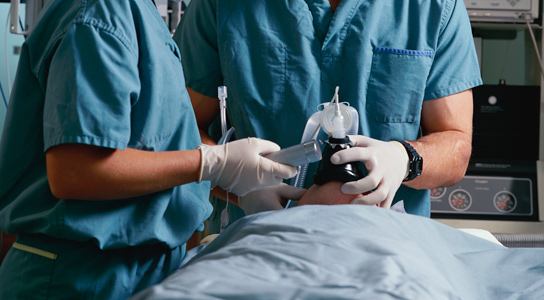General Anesthetic Induces Slow Oscillations, Disrupts Brain Communication
November 6, 2012

Image: ThinkStock
Little is known about general anesthetics, the drugs that put patients in a coma-like state, feeling no pain or discomfort while being operated on. A new study shows that these classes of drugs change the activity of a specific region of the brain and make it more difficult for the parts to communicate.
The scientists published their findings in the journal Proceedings of the National Academy of Sciences. Laura Lewis, a neuroscientist at MIT in Cambridge, and her colleagues used microelectrodes to measure the activity of single cells and networks of neurons in the brains of three people who were about to undergo neurosurgery for epilepsy. Each of the patients was given a dose of the general anesthetic propofol, and their ability to respond to auditory stimuli was used to determine when they slipped into unconsciousness.
The loss of consciousness coincided with the rapid onset of brain waves known as slow oscillations. The onset was precisely timed when the patients lost consciousness and started at different times in different regions of the cerebral cortex. Individual neurons became less active, with their activity spiking at the same time as the slow oscillations in that region.
The researchers believe that these slow oscillations are making the processing of information within specialized brain regions less efficient, and preventing the different parts of the brain from communicating.
It’s still not clear whether the slow oscillations actually cause the loss of consciousness or are a consequence of it. Further work is needed to determine this. It’s also possible that the patients had different brain activity from healthy people, because of the seizures and medication involved with epilepsy. However, the electrodes were placed 2 cm away from abnormal tissue areas, and the behavioral effects were the same as those in healthy people.
The findings could lead to improved ways to monitor the effects of anesthesia, and to the development of better anesthetic drugs, and the researchers now plan to investigate whether other general anesthetics act in the same way.
No comments:
Post a Comment